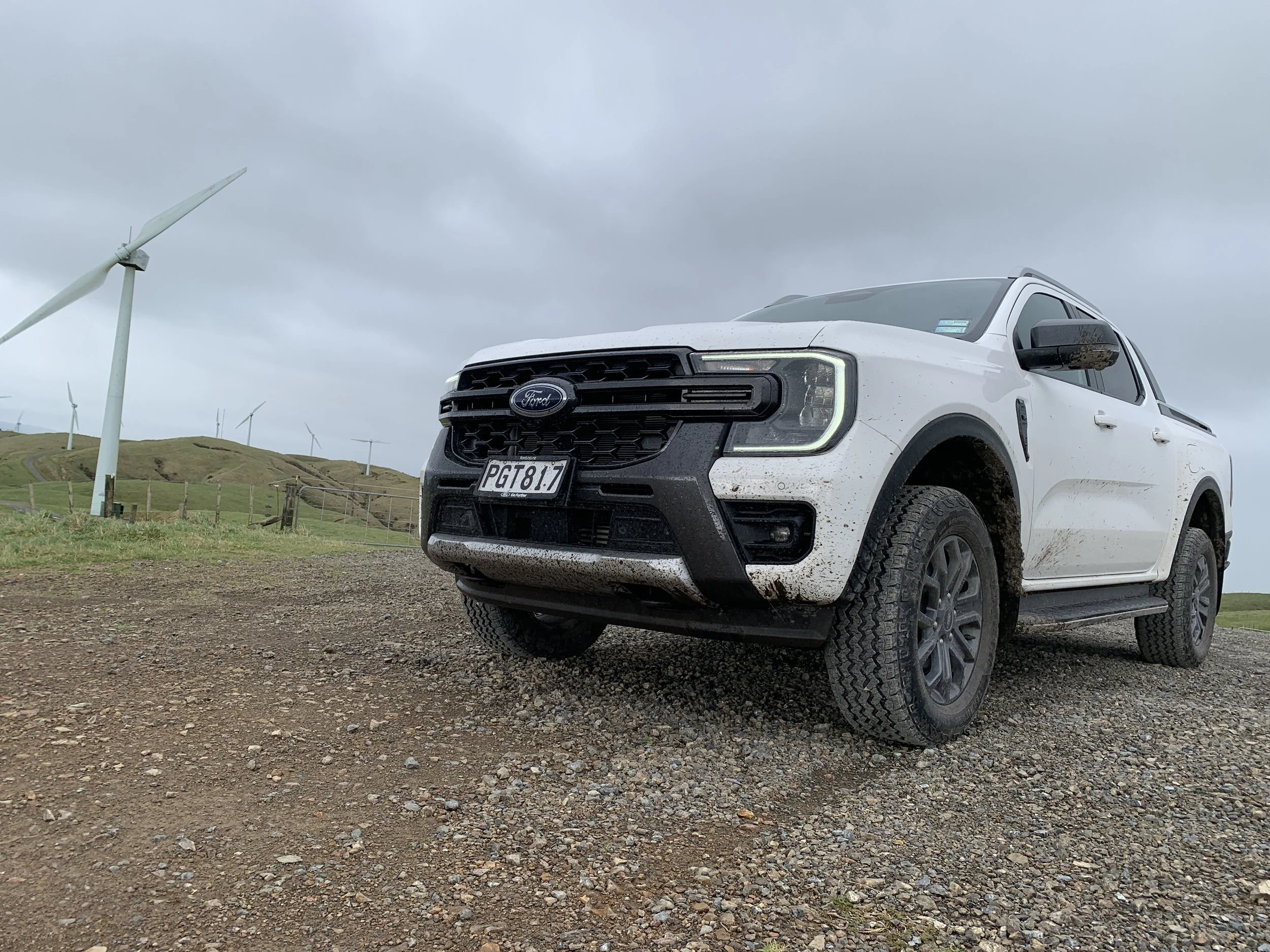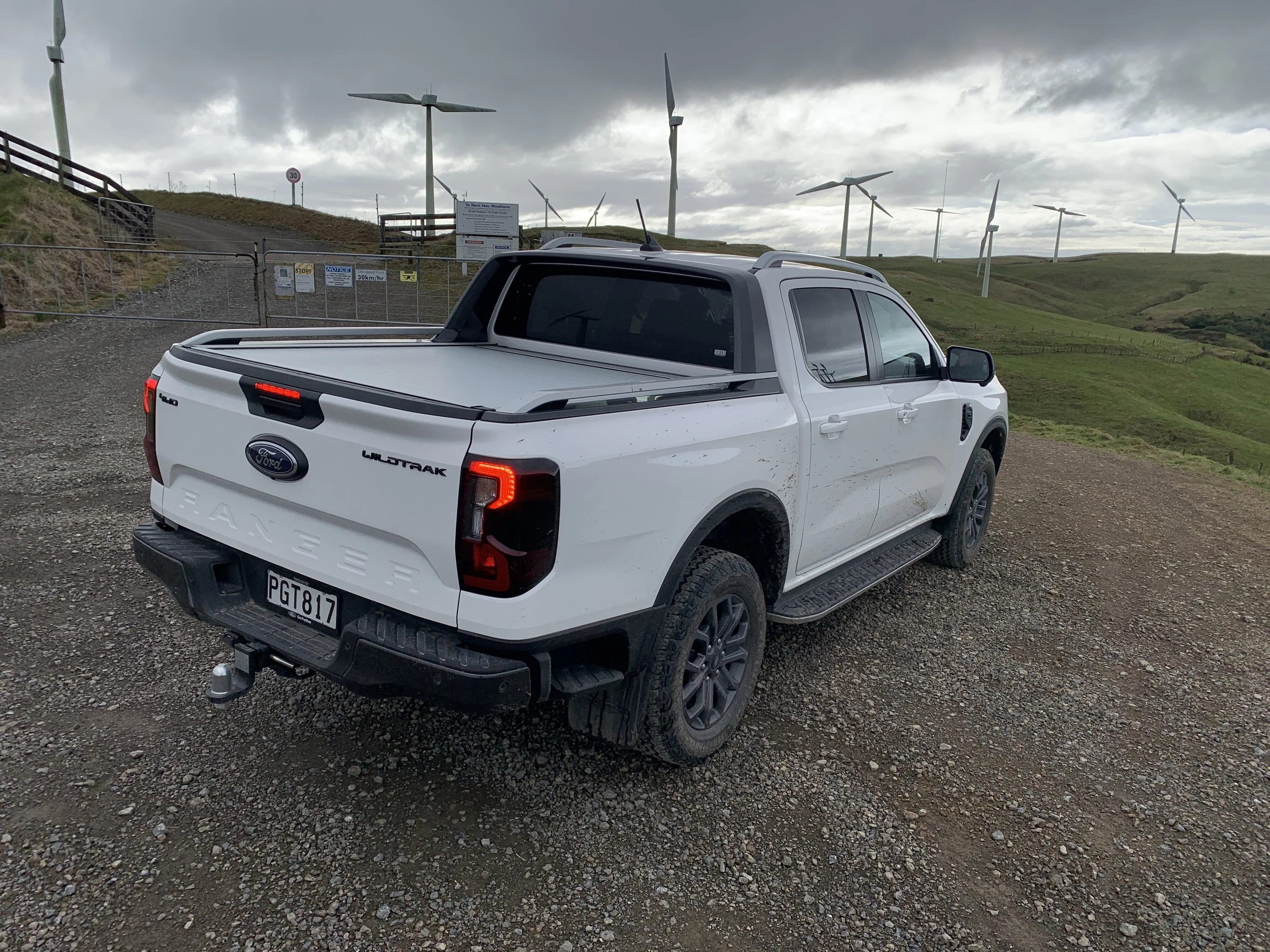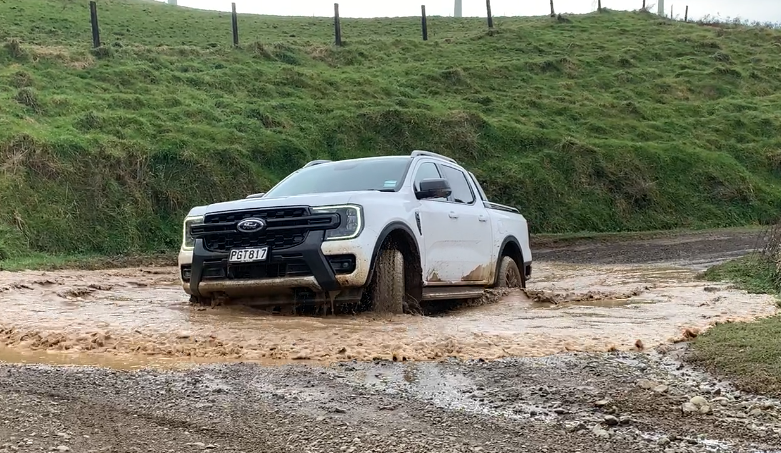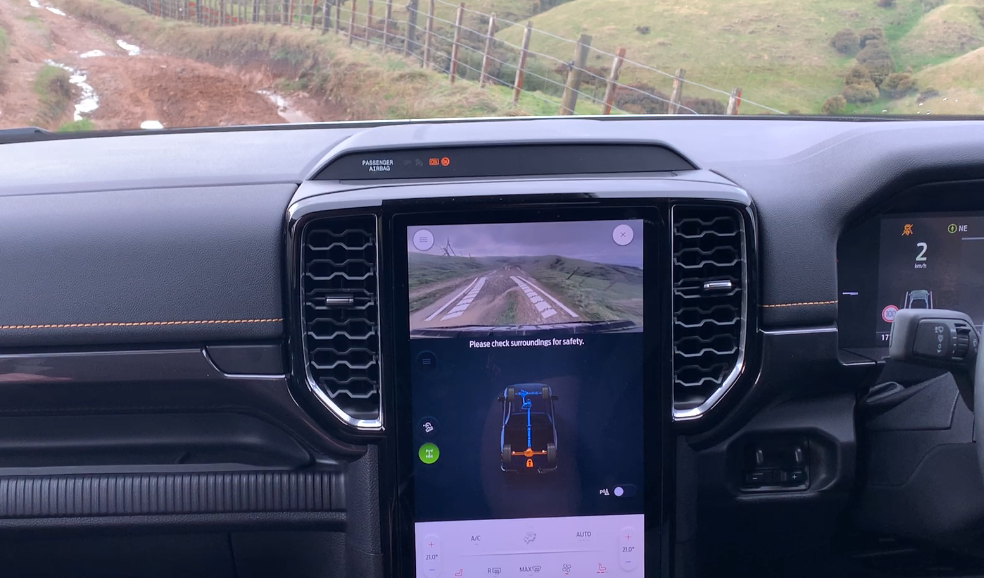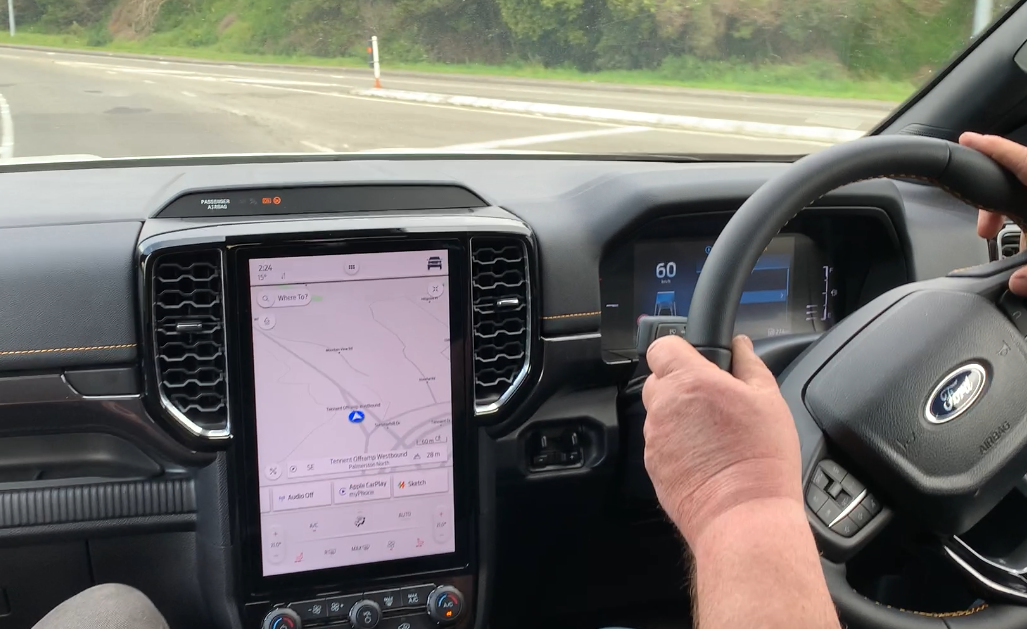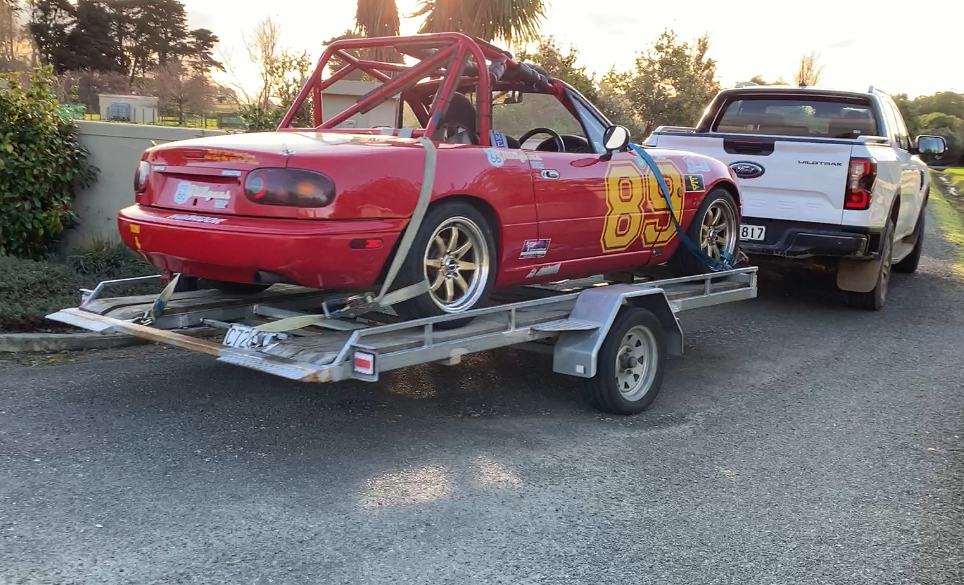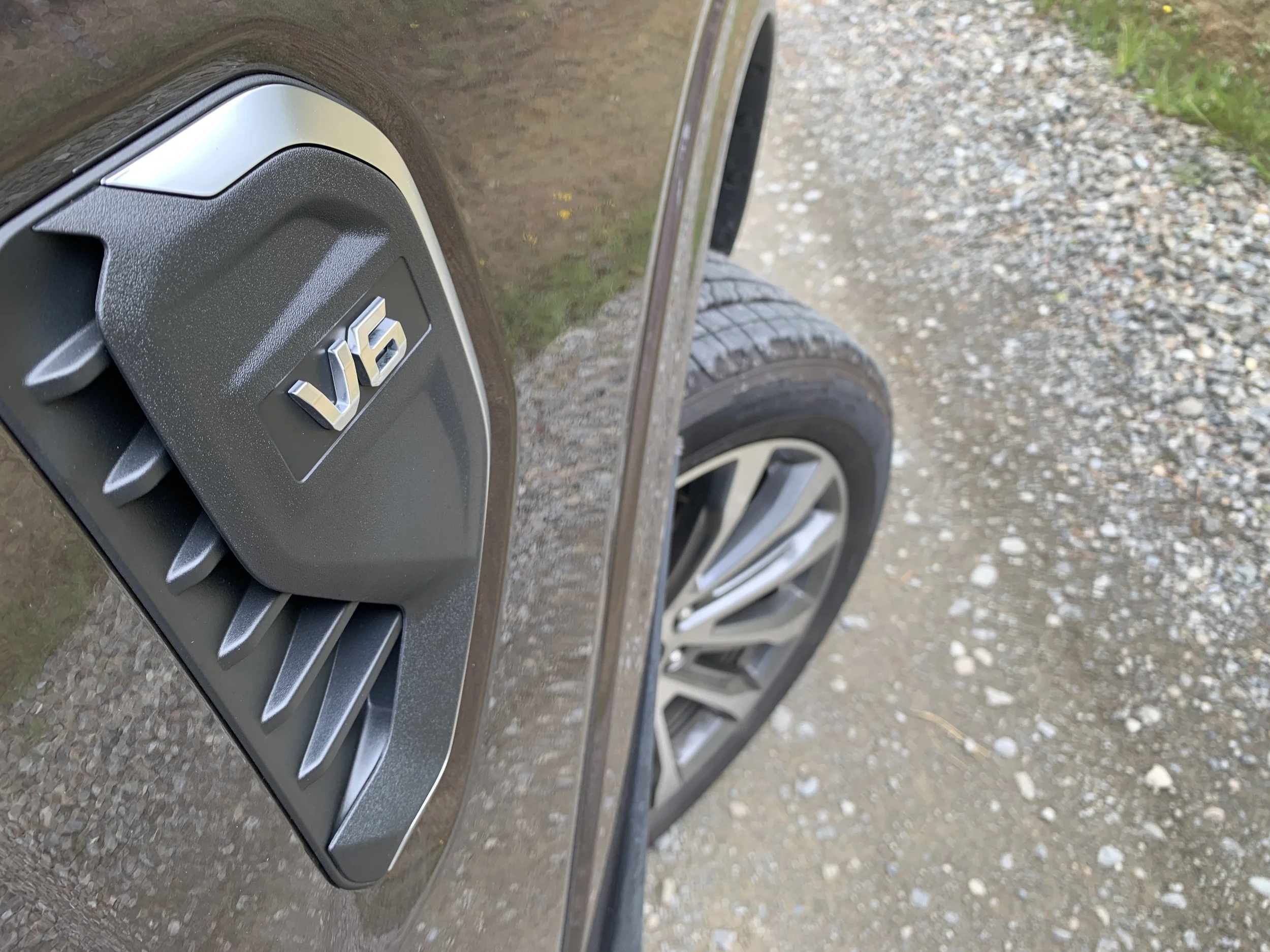Ford Ranger Wildtrak V6 roadtest review: V for victory
/An impressively refined ride and dynamic feel, plus the fresh cabin treatments make Ranger special. But the full Wildtrak package, V6 included, has an especially powerful allure.
Price: $80,490 (plus $3910 Clean Car fee).
Powertrain: Single turbo 3.0-litre V6 diesel 184kW/600Nm, consumption 8.4L/100km (ADR), 10 speed automatic transmission, all-wheel-drive (with rear-drive option).
Vital statistics: 5370mm long, 1884mm high, 1918mm wide, 3220mm wheelbase.
Likes: So many … the question isn’t really ‘would I buy one?’ but ‘which one would I buy?’.
Not so much: No analogue speedo and rev counter representations; not a lot of oddment space in cabin; bonnet release on left side door pillar.
SCHEDULING requirement placed this week’s test subject alongside a Lexus for a couple of days – no grounds for considering them competitors but an interesting comparison when engines fired up.
If there’s one thing Toyota’s luxury brand consistently aces, it’s quality. Perfection is a starting point for this make. Conceivably, then, the diesel V6 under the broad bonnet of the LX500d, a high-brow spin from the Land Cruiser 300, would have to be better than that running now with this Ranger.
In capacity, technology, turbocharger count and outputs; it’s ticks all the way for Lexus’ bigger-lunged, torquier unit. For refinement, a quality that is a Lexus core value? Erm, not so fast big fellow …
I’ll not string this out any longer. Ford’s TDV6 is much more the strong, silent type. The civility at idle is impressive; tick over is barely obvious not just from within the cabin but also even when you’re standing at the bonnet-side and its refinement remains in operation. It might be called the ‘Lion’ V6, but you’ve got to give it an absolutely brutal boot to hear it truly roar.
By now you’ll be well-versed in the effort Ford’s Melbourne-based development team invested into ensuring the first new Ranger in more than a decade would hit the ground running at a pace that, whenever possible, puts it ahead of all competition and, if advantage could not be carried, then certainly on even-pegging.
It’s clearly been a big dollar project, though at same token Ford has not exactly made it a spending free-for-all. There’s plenty of ‘waste not’ to what is a ‘something old, something new’ story. The central body structure including the cabin, door openings and glasshouse are close to the same as the old model with a few revisions. Everything else – including the chassis, sheet metal, interior, cargo tub and suspension – are either new or heavily revised. But even some of the ‘new’ is more accurately ‘new to Ranger’, as it has been tested in previous settings, some Ford badged, some not.
This V6 is on that latter list. It has heritage going back to the 1990s’ with Peugeot, Land Rover, Jaguar and also other Blue Oval products, most notably the Falcon-derived Territory wagon, where it ran as a 2.7-litre. It has been a 3.0-litre before, with single- and dual-turbocharger induction systems, behind the Green Oval badge. The version Ranger achieves seems to have done time already in a kind of Ford truck we don’t see in right-hand-drive, the F-150. The Power Stroke edition was in a tune very similar to how it appears now in Ranger.
How much life does it have left? Don’t sweat it. Sure, being lumbered with a high CO2 count (254 grams) leaves a black mark, but if consideration of that question comes down simply to how it works with Ranger, it seems an insult to ask. You’d think it was freshly-minted. Perhaps, if Toyota finds a way to fulcrum in that Lex-cruiser 3.3 into the Hilux, there would be a problem – Japan Inc’s 227kW and 700Nm would raise stakes so much higher. But as things stand, a Wildtrak V6 (and the impending Volkswagen Amarok) is the compression ignition king in one-tonnedom.
Slotting in a six-cylinder is not without cost. Wildtrak is currently the only Ranger to offer in both four-pot biturbo and V6, with a $5000 between the two. But that’s just the start. Ford calculation that the larger unit burns 0.8 litres per 100km more in overall consumption didn’t seem borne out by this test. The average over seven days of 11.2L/100km suggests a wider gap. And, anyway, even if the maker-stated claim is confirmed, there’s the considerably higher ute tax the six achieves under Clean Car.
Still, those factors appear to be brushed off by the fanbase. Wildtrak V6 is the most popular of all editions, with the longest pre-order wait time, which doesn’t surprise Ford. It says Ranger receiving a larger engine was top of the wish list when it surveyed owners of the old-gen model years ago.
Even if it’s old, the V6 is the new vibe and a core ingredient at a time when the stakes could not be higher. Yes, this is a tenuous time for utes and the terrain ahead under Clean Car is set to become considerably tougher, particularly after 2025. Yet Ranger seems unlikely to die easily. The previous T6 form established not only as the barometer for this category but also became the most vital cog in the Blue Oval sales machine in this country. The brand’s very existence relied on it. Nothing has changed.
What chance this new Ranger letting the side down? None, really. Even this early in the game, with other versions yet to be intensely studied, there is no doubt in my mind that every Ranger derivative now is better than its immediate equivalent in the previous range.
The comment made by others about how Ford’s team has sweated the details to raise the bar seems entirely valid. This is a model that benefits from impressive attention to detail, at all levels.
It is not beyond criticism. Notwithstanding my general delight with the high tech displays, electronic imperfection could be an issue. On one occasion during this test the centre instrument cluster failed to fully activate; engine temp and fuel tank status came up, but the main area delivering the speedo, tachometer and other info remained dark. Ford subsequently changed the battery, in belief the extended period the vehicle had spent in transit might have become an issue. However, it failed again with the next writer. Just this one vehicle? Time will tell.
In the meantime, while I’ve nominated five personal quibbles in the attached video, I’d say none are crippling to its chances. Not even the lack of paddle shifters (which Raptor achieves) in favour of a strange – though not Ranger-specific, as Ford cars have it too - switch system for manual gearshifts.
By contrast, the five off-the-cuff highlights also provisioned could well each be unique selling points.
What’s become tangibly clear to me is that perhaps the very best example of progress is delivered by the Wildtrak in this new V6 format.
An oomph otherwise only occasioned in the $5000 cheaper Sport (at least until Ford NZ ticks off availability of a V6 XLT, as per Australia) partnering with permanent all-wheel-drive – yes, it can regress into rear-drive, but only on specific driver command - is in isolation a powerful packaging no other rival, save (for obvious reasons) the Volkswagen Amarok can match. On top of that comes additional technology; from the big screen and all it occasions to the driver modes modifies the engine response, the gear shift points and how or the differential acts.
If the Ranger family per se is a prize litter, then this model is the pick – it is the nightmare for the product planners at Toyota, Mazda, Isuzu and Mitsubishi appear to have no outright answer to.
Does that seem a dangerously statement when the Raptor has yet to arrive?
On one level, yes; the sports model is clearly going to be at a new level, simply though having biffed the twin-turbo four-cylinder diesel it has run with until now for a more fiery – by far - twin-turbo petrol V6.
But I’d suggest it would be prudent to bear in mind what Ford says about Raptor; that it is so extreme and so honed as to demand being considered a different beast, a loner. Accept that logic and the Wildtrak, already the leader of the main pack by virtue of its pricing, also deserves to be accredited prime status as the best everyman Ranger by virtue of its other strengths. In engineering, specification, design and dynamic ability.
Plucking Wildtrak from the launch venue and immediately immersing it into evaluation on home turf mean an unbroken interaction with the tech and also enable better appreciation of its full ability on-road and off-road.
Opportunity to test its chops at towing, a fundamental strength for which it better prepares this time around, with a tailored drive mode, was incomplete.
Ranger supplies with a more complex plug portal than the usual NZ-standard eight-pin standard type. You’ll need a converter to enable the trailer coverage system that allows you to set the length of whatever you’re towing. It supports lengths varying from 2.4 metres to 10 metres long. This system takes the length of the trailer into account and adjusts the sensitivity of the blind-spot assist. The integrated trailer brake controller, trailer connection checklist and trailer light check system also rely on the fancy plug. Hauling, in daylight hours, my single axle flatbed with race car aboard was a patsy test. It was a 1400kg load Ranger barely felt by a unit whose maximum braked towing capacity is up to 3500kg, with a 350kg tow ball download limit.
The 400 kilometres’ additional driving reinforced Ranger is on solid ground having designed it to reflect changing customer tastes – as utes increasingly become dual-purpose “work and play” vehicles – and replace sports utilities in domestic driveways as family cars.
In respect to overall roominess, the cabin is still not on par with what you will get from a SUV wagon of commensurate size and substance – the rear seat is marginal for big adults - but the comfort is decent, the safety superb and the driver’s seating position is more comfortable thanks to height and reach adjustable steering.
Wildtrak’s mega touchscreen seems on the limit for size, but the displays – ranging from usual things like maps and entertainment controls to sub-menus for HVAC settings and exterior lighting, plus an off-road screen -
are solid smarts in look and operability. This is Ford delivering a true luxury car element into a workhorse. All other efforts seem rudimentary in comparison.
With Ranger, it’s prudently not a total immersion. Keeping the audio volume and air-conditioning controls as dials rather than push-button is excellent, as these are much easier to operate without taking your eyes off the road. Likewise, running the various drive mode functions via a spindle dial below the gear shifter is also a good idea.
The drive mode info comes up on that screen forward of the steering wheel; you get a full display of off-road settings up here when the off-road mode is selected. This display is also configurable to display the information you might want to see more often; with various ways of showing the revs and speed. But not the way I want: With reproduction of an old-style analogue dials.
Functions that do become primarily touchscreen operated are interactions that would risk becoming complex with any other approach. It basically makes child’s play of those. The electronic interface is very high quality – the clarity from cameras used by Wildtrak’s 360 degree display gives one example of the attention to this – but, just as importantly, it works logically and, by and large, seamlessly, not just when you’ve stopped but also when on the move. Unlike the instrument display, it seems free of reliability glitches.
The stubby electronic gear lever for the 10-speed auto (there’s no manual) has an unusual feel and action, and will take some getting used to. No argument, it's better than the rotary dial that was being considered, but it can be hard to judge what position it is as there’s no haptic response. The gearbox itself is great; heavily revised for this new application, it hasn’t any of the hesitancy or indecision of the previous generation.
The wireless phone charging pad is great – hooray for wireless CarPlay, too - just big enough to accommodate a large smartphone in a bulky waterproof case.
The towhook received more attention than the traydeck, but that’ll have to be reconciled with further Ranger involvements. Things are looking good back there, with room for a Euro pallet between the rear arches.
Standard to all wellsides, the step at the rear of the cargo tub sides to improve access to the back is a simple but highly useful update. Wildtrak has loadbed lighting and trendy adjustable tie-down lugs – the same kind Nissan has used to good effect in Navara for yonks – plus an auto-sliding sectioned metal deck cover that opens and closes off the remote; a smart feature but one whose longterm integrity might be questioned by those who go wild. It’ll have to be removed if you want to fit a canopy; that process also requires inclusion of a body-strengthening J-brace.
Wildtrak also has a plastic deck liner whereas Sport seems to have a spray-on type. I’d rather have the latter and it’s weird there’s two approaches. A 12-volt power outlet and an easy-lift tailgate are part of the fitout but, while the Wildtrak has the clamping points in the tailgate it lacks the ruler you get on the Sport; a reminder this version of the working class ute is more management-minded.
In respect to dynamic attribute Wildtrak is very much more polished, not just in respect to how it was previously but also in regard to what is generally expected from a ute.
While the primary reason for Ford pushing forward the front wheels was to make room for the V6, a benefit of this and the 50mm widened track (which primarily, in respect to rear wheelset, was to broaden the deck enough to fix a massive bugbear, the lack of room for a pallet) plus moving the rear shock absorbers to the outside of the chassis rails, where they have more leverage on the axle, is that the Ranger has raised the bar in respect to road-holding and dynamic prowess.
The benefits are patent in the stability and ride control. Utes do not drive like cars. That’s the price of having a tall ride height and a robust ladder-type frame. The primary role is to transport heavy-duty loads and cope with tough off-roading. Yet bearing that in mind, this one certainly does not drive like your average ute.
The rear suspension having been redesigned, ostensibly for better stability on rough surfaces, makes quite some difference. It copes well with pot holes and other pock marks; there’s less skip, bustle, jitter and judder. Inevitably the ride will get a little bouncy, especially for those in the back seats, and as is ute-typical it feels best with some weight on the back. Yet it is also a lot more relaxed and confident in unladen state.
The 255/65 R18 all-terrain rubber doesn’t inhibit it having good enough balance and traction to raise potential for spirited driving. Not saying you should; just that it potentially can. My experience is that it keeps very good composure on a variety of road types at a variety of speeds.
Aside from the dynamic tuning, credit is also due to it having, in V6 form, a very good all-wheel-drive system. Full-time 4x4 clearly benefits it on rough tracks and wet roads, where it also improves the sure-footedness of the chassis.
On road especially, it is more confident, more competent and more comfortable than its rivals. The driving experience on seal is polished enough you have to remind yourself this is, at heart, a working vehicle with a separate chassis. In that respect it really might be the breakthrough one-tonner; the one that those who do not like driving this kind of vehicle might nonetheless favour.
The steering retains its slow feel, but has a little more heft to it than before, something that suits the Wildtrak well and makes it a bit more enjoyable to drive and manoeuvre. It is easy to park and reverse and doesn't feel too heavy or difficult to manoeuvre, but the turning circle is huge due to the widened tracks, which may be a bit of a hinderance in urban settings.
Those who off-road intensively will say going to four-wheel-disc brakes is a brave step for a ute; there’s risk in the rear set clogging if conditions are mucky enough. That’s why many still have rear drums, which are much more resistant to infiltration. It didn’t happen on test, when a couple of nasty spots were intentionally aimed at, but I take the point. On road sudden-stop performance is much better than from a front-disc, rear-drum set-up; there’s no tangible nose dive under heavy efforts.
The off-road running also allowed opportunity to get a handle on the effectiveness of the electronic traction control system, which remains active if and when you engage the standard rear differential lock. There’s thought the ETC still isn’t as fast in action as the system in the Hilux; I’d love to back-to-back them.
But overall? It reminds me of when previous Ranger came out, and stunned the opposition. Ford has done it again … but with even more heat.
Wildtrak’s pedigree is elevated by all the enhancements. Ford has been sensible in retaining the biturbo four as a Ranger choice; quite logically, it’s a perfectly fine choice for everyday operability.
It’s clear, though, that private buyers with desire to enjoy something special in are going to find the V6 hard to resist; the additional smoothness and thrust are just right in this setting.
Even if you put ride quality, comfort and interior design above how quick your truck can sprint, it’s still a nice finishing touch, worth every cent of what is a modest premium.

